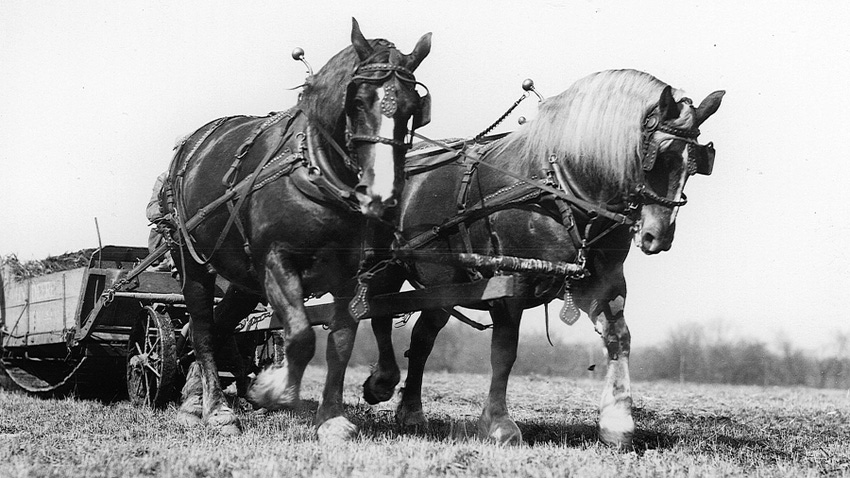
Fred Whitford is at it again. The director of Purdue Pesticide Programs and author of several books on the early days of Purdue Agriculture and Extension is chronicling the transition from horses to tractors. Once again, he needs your help.
“What do you remember about draft horses that you worked with, or that your dad or granddad told you about?” Whitford asks. He wants to hear your memories, and he’s willing to give away one of his recent books to the person who provides the most interesting description for this and other questions.
“What were the horses names? Were they almost part of the farm family?” he continues. “Were they hard to hitch up? Did they ever take off? Were they kept around after a tractor came to the farm? If so, how did their role and their lives change?”
Send your personal experiences or memories from Dad or Granddad to [email protected], or mail to 599 N., 100 W., Franklin, IN 46131.

PULLING THE LOAD: The immovable object, a rock, loses to an irresistible force — the horses, in this situation.
Planting memories
In the August Indiana Prairie Farmer and here online, a picture of draft horses pulling a corn planter was featured. Whitford was looking for the best explanation of how check-row planting worked in horse-farming days, as well as interesting memories of the practice. He selected two winners, and each will receive a copy of one of his latest books. Congratulations to Mark McKinney, Tipton, Ind., and Leonard Hartman, Kokomo, Ind. Here are excerpts from their comments:
McKinney. “I was fortunate to have been born in 1931 because it gave me an opportunity to experience both worlds of planting corn with and without horses. My good fortune is because Dad’s first tractor was a Farmall H, purchased in 1939. So, you see, I was working the ground ahead of the planter with the Farmall H while Dad was planting corn with a team of horses.
“What I most remember was Dad took a 15-minute nap on the living room floor ‘to let the horses rest,’ while I went back to the field right after lunch because the tractor did not need a rest.
“I questioned that nap at the time, but I also remember that after a few hot days, the horses kept walking a little slower. So, Dad would let the team take a break after each round.”
Hartman. “The white line passing by the horses’ hooves in the picture and through the corn planter is a wire containing knots. The wire is stretched from one end of the corn rows to the other. A metal stake pushed into the ground at each end holds the wire in place. When the planter is turned to plant the next two rows, the stake is moved and pushed into the ground directly behind the planter seat’s middle.
“As the planter moves, knots cause the planter to hill-drop three kernels of seed corn in each of two rows. If successful in keeping tension on the wire steady, corn could be cultivated cross ways as well as down the row.
“Here’s a side note: This planter is without fertilizer boxes. They would have been mounted behind the seed box and above the wheel.”
About the Author(s)
You May Also Like




